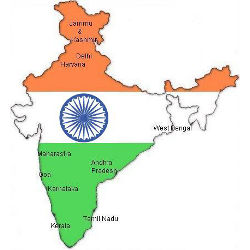
India is rightfully in the news in recent years, thanks to its impressive economic growth and its notable software industry. Modern computing and India have had a long association. India’s own computing efforts began in the early 1950s with the Tata Institute of Fundamental Research (TIFR) in Mumbai and the Indian Statistical Institute (ISI) in Kolkata building their own computers, primarily for scientific applications. Business process outsourcing started in the 1960s with commercial computer centers performing telephone and electricity billing, airline scheduling, and so on.
India, however, missed the rapid pace of growth in computing toward the end of the 1970s. That era found discrete computers replaced by VLSI circuits requiring cutting-edge technology and billions in investments. The software train also moved far ahead in that period. The country lagged seriously due to inadequate research activities in its academia and industry.
However, destiny was beckoning India. The rapid computerization worldwide in the 1980s brought software to far greater prominence. Small and large organizations began using computers to increase productivity. Development of new software and customization of existing software created a demand for a great number of programmers.
India was naturally poised to play a critical role at that stage, with a large number of young people trained in software. The demography was critical, as fast-changing tools and technologies could only be mastered comfortably by a young work force. India had many necessary ingredients: youth, English training, a hunger for learning, and, of course, a dire need for employment. The Y2K problem brought unprecedented demand that was leveraged effectively by the Indian software industry. The sophistication of software tools empowered even those who didn’t have top-class computer science training. The software industry grew rapidly, aided by high-bandwidth data lines. From nearly nothing in the early 1990s, the industry today contributes to nearly 7% of India’s more than $1 trillion GDP and employs over three million employees directly.
Despite the boom in the software industry, the country clearly missed investing in high-quality academics and research. It is puzzling how a country with more than three million IT professionals and over a million undergraduate computing students produces barely 100 quality Ph.D.s each year. Computer science has many Indians, but only a small fraction work in India!
India today has 1.2 billion individuals, of which about 400 million are in the 115 age group and another about 400 million in the 1535 age group. India, therefore, has the opportunity and responsibility to provide the future intellectual work force in computing and other areas. The quality of primary education is highly variable and downright poor in all but a fraction of schools. Good teachers cannot be produced rapidly, but good teaching materials can be replicated economically using technology. The problem is truly Himalayan in proportions and a great challenge in scale and variety. It can provide wonderful opportunities to all researchers and technologists to work with their Indian counterparts for great mutual benefit.
Challenges for India include improving quality in its undergraduate programs as well as enrollment numbers in the research programs in computing. College enrollment numbers have multiplied in the last decade but the quality lags. Adoption of technology can help improve education, but technology cannot solve the problem. Trained college teachers are in great shortage and radical ideas are needed to create them. Creating enough Ph.D.s is practically impossible. A scalable master’s-level course with sufficient research exposure can be designed to create a teaching force.
Increasing human resources for top-class research is essential for India to make its own mark in computing. This calls for more doctoral students and greater advising resources in the academia. Creating networked research groups from institutions in India and abroad is a way to approach this challenge. This is a great opportunity and an invitation to the global computing community to join hands with Indian institutions to establish multi-country research groups and doctoral programs. Let us learn from the industry, where multi-country groups are the norm today. The government and industry in India have recognized the problem and are eager to be part of any solution that can work.
ACM has recently established local presence in India. In addition to extending membership to the great number of software professionals here, ACM can help facilitate the expansion of computing education and research in India by initiating collaborations with Indian groups and bringing top ACM conferences here. India can gain from ACM’s collective experience and ACM from the opportunities India presents.



Join the Discussion (0)
Become a Member or Sign In to Post a Comment